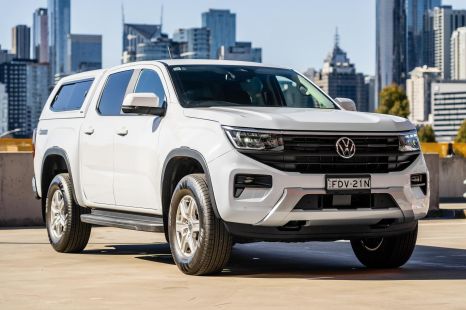

Max Davies
2025 Volkswagen Amarok Life TDI500 review
1 Month Ago
This is Australia's favourite 4x2 cab-chassis ute. But is Toyota's HiLux WorkMate the best offering, or just the best-known?



Quickly see how this car stacks up against its competition. Select any benchmark to see more details.
CarExpert helps new car buyers save thousands with expert reviews, honest advice, and transparent pricing – no dealer pressure and no sales games.
The humble Toyota HiLux WorkMate dominates sales in Australia’s 4×2 cab chassis market, on the back of its unbreakable reputation and limited competitor set.
But does its 40 per cent market share (2020-2021) reflect its excellence compared to newer competitors such as the Isuzu D-Max SX, or do people keep buying them out of habit?
The model we’re testing is the barebones WorkMate 2.7-litre petrol Single-Cab with a manual gearbox. Sole traders and fleet buyers, take note.
Meantime, I’ll grab my high-vis…
The base price for the WorkMate Single-Cab Cab-Chassis 4×2 petrol manual is $24,225 before on-road costs.
A more realistic price as per Toyota’s website is around $30,000 drive-away, including an in-house general purpose alloy dropside tray installed after the point of registration.
For a bit of context, that’s about equal to the current advertised price of a diesel-powered Isuzu D-Max 1.9-litre SX trayback ($31,990 drive-away).
For those who prefer diesel, the HiLux WorkMate 2.4-litre diesel 4×2 Hi-Rider – it sits higher than the petrol model, as do the vast majority of 4×2 cab chassis models these days – costs $29,465 plus on-roads, or around $35,500 drive-away with a tray.




This is a tool-of-trade, not a luxury car.
Standard features include:

The HiLux family wears an five-star ANCAP safety rating with 2019 date stamp.
It scored 96 per cent for protection of adult occupants, 87 per cent for child occupants, 88 per cent for vulnerable road-user protection, and 78 per cent for safety assist features.
Unlike old-school work utes, this one has plenty of safety and driver-assist features fitted to protect you or your staff, such as:
There are also a few features bundled into the Toyota Connected Services app:
However, neither a reversing camera or parking sensors are fitted, meaning you’ll need to hit up the accessories catalogue.

A comfortable and apprentice-proof interior, featuring comfy and hard-wearing bucket seats with plenty of adjustability, a height and telescopic steering column, and analogue gauges bracketing a 4.2-inch trip computer with digital speedo and fuel readout – but, no bench seat!
The ergonomics are typically well sorted, with the stick, touchscreen and ventilation controls all easy to reach and intuitive to operate. Ditto the audio, phone and trip data buttons on each spoke of the urethane wheel.
The hard-wearing and easily cleaned trims and the vinyl floors (covered here in thick rubber mats) are suitably utilitarian, so your muddy Blundstones look right at home.



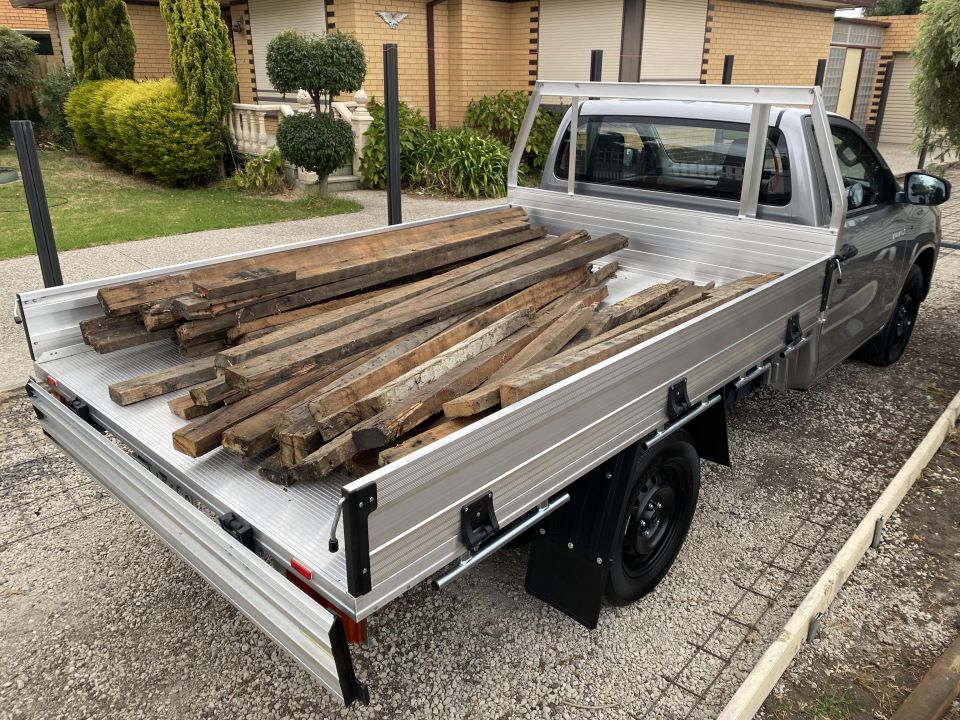
There are a ton of places to put things, from the bottle holders in each door, cupholders in the dash, large open console along the transmission tunnel, and twin closing gloveboxes.
The touchscreen is stuck to the dash and framed in black plastic, but offers the key functions of Bluetooth and Apple CarPlay/Android Auto – the latter in lieu of embedded satellite-navigation.
The 2400mm x 1700mm genuine accessory alloy tray comes with tie-down bars and three dropside sections, and can be optioned with a sliding trundle drawer underneath (factory accessory, not fitted).

The same ‘2TR-FE’ 2.7-litre petrol four-cylinder as used in the previous-generation HiLux. It’s an old but proven donk, then.
It produces 122kW of power at 5200rpm and 245Nm at 4000rpm, and is mated as tested to a five-speed manual gearbox, and is standard with rear-wheel drive.
For those who don’t wish to row through their own gears, the six-speed automatic costs a further $2000.

Toyota claims combined-cycle fuel economy of 11.1 litres per 100km on the combined cycle, which about matches my overall average of 11.6L/100km.
That’s thirsty for a low-output four-cylinder, and at current petrol prices that 80L tank is going to become a bit of a cost sink. It’s rated to tow up to 2500kg.
For context, the available HiLux WorkMate Hi-Rider diesel features a 110kW/400Nm 2.4-litre turbo-diesel with claimed fuel economy of 7.4L/100km.

Twist the key and the slightly coarse petrol engine fires up. Our car had less than 1000km on the odometer so finding first and second gears occasionally took a second, but we’d expect the drivetrain to loosen up once run-in.
The clutch take-up point and weighting makes it extremely simple to drive, ditto the fitment of hill-start or hill-hold assist.
It’s quite a fun throwback rowing through five gears through a long stick, in a high-displacement naturally-aspirated engine.
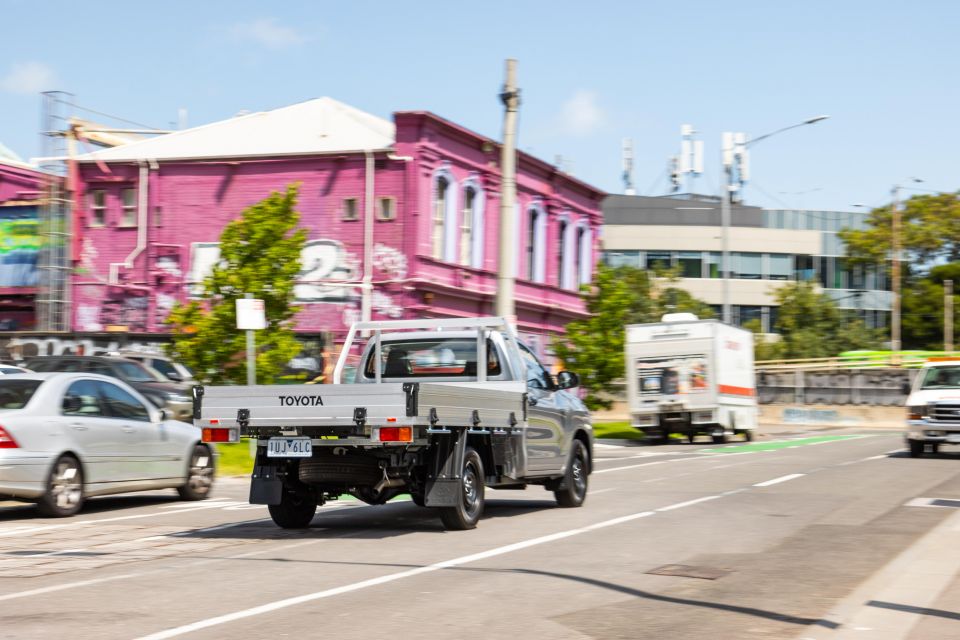
The engine is not overburdened with power or diesel-like low-end torque, but on the flipside it’s smoother in urban commuting. It loves a drink though – simple, older designs of engine may offer the reassurance of reliability, but they’re not so efficient.
A sixth gear would be most welcome, given the indicated engine speed was 2800rpm at 105km/h, which is a little higher (and therefore less refined) than is ideal.
The rack-and-pinion power steering has some weight and resistance dialled in, but not excessively so, and the mechanical simplicity of the HiLux makes it quite engaging.
NVH suppression felt fine for this class of vehicle, and the fitment of lane departure warning (no steering override) and adaptive cruise control are both helpful things to have.

Unladen ride via the rear solid axle with leaf springs is pretty poor, with excessive bucking and jolting over speed bumps and other large road imperfections. You’re never settled.
However, put a few hundred kilos in the back and it all settles down, with more controlled suspension.
With a GVM of 2700kg and a kerb weight of 1495kg, you get a payload of a smidgen over 1200kg. The gross combined mass of 5200kg means you can tow the maximum 2500kg even at payload. But, we wouldn’t… Get the diesel for that.
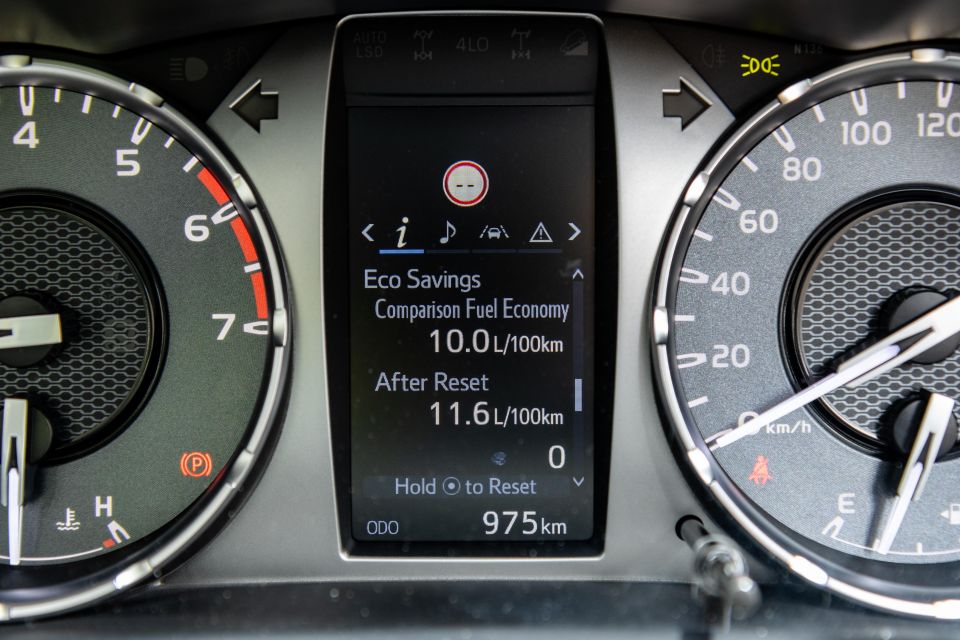
All Toyotas come with five-year, unlimited-kilometre warranty, and three years of Toyota Connected Services for free.
Each or the first six services are capped at a reasonable $220 per visit, but the intervals are a shorter-than-average six-months or 10,000km – whichever comes first.
Toyota claims combined-cycle fuel economy of 11.1 litres per 100km on the combined cycle, which about matches my overall average of 11.6L/100km. That’s poor for a four-cylinder engine.

Rental companies, big fleet buyers and sole traders – all buy HiLux WorkMate low-rider 4x2s almost out of habit or familiarity.
There’s isn’t a heap of choice at this end of the market, either, making the Toyota an even more obvious choice.
Given their intended use, where reliability and familiarity are paramount, I get it. And let’s not ignore the crazy-good resale value on these things too.
But as tested it’s also thirsty, not particularly comfortable unless heavily laden, lacks parking aids, and comes with twice-yearly servicing even for low-mileage operators.

Click the images for the full gallery
MORE: Everything Toyota HiLux
CarExpert helps new car buyers save thousands with expert reviews, honest advice, and transparent pricing – no dealer pressure and no sales games.


Max Davies
1 Month Ago
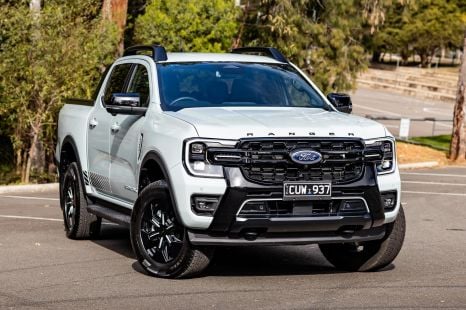

Matt Campbell
18 Days Ago


Damion Smy
10 Days Ago


Josh Nevett
8 Days Ago


Damion Smy
8 Days Ago


William Stopford
8 Days Ago